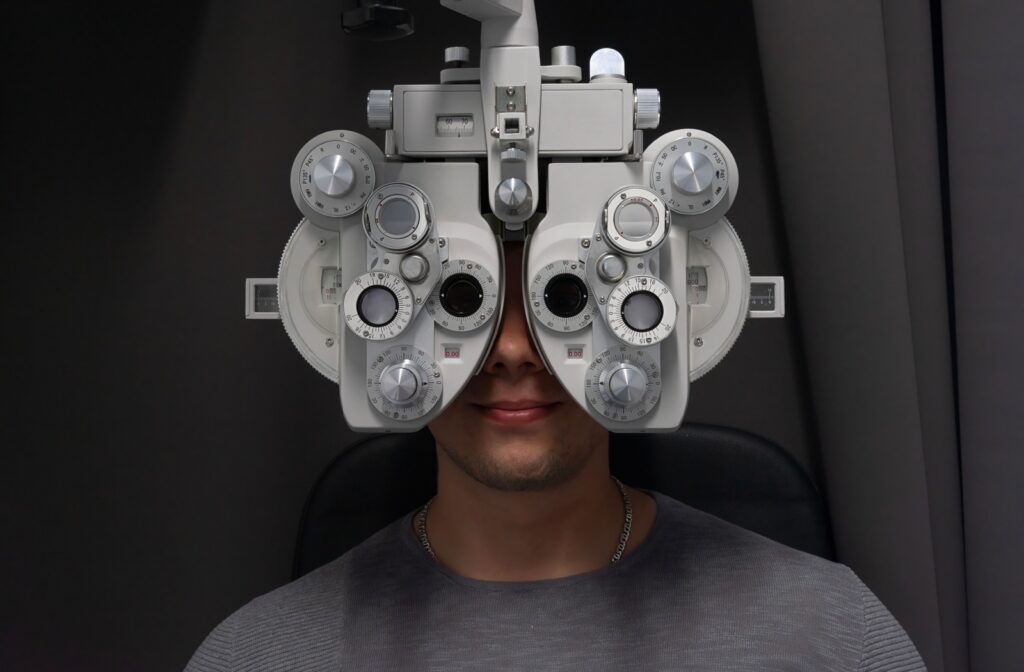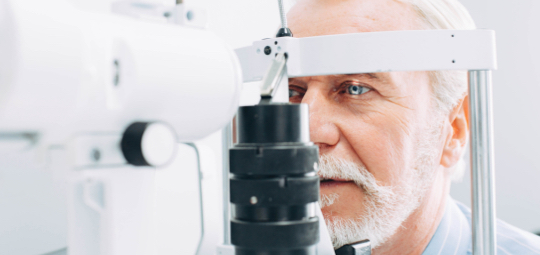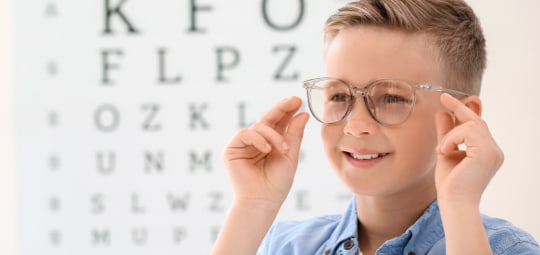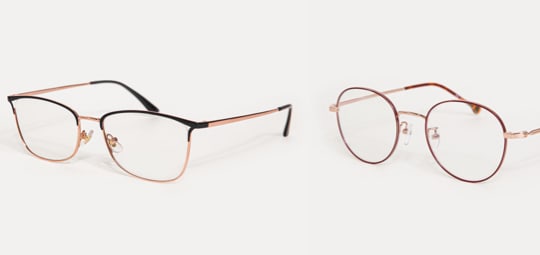You might find yourself squinting to read a street sign that used to be clear, or maybe you get headaches after a day of working on the computer. These little moments can make you wonder if your vision is changing. It’s a common experience, and it often leaves people asking how often they should visit the eye doctor.
While the only way to know for sure whether you need glasses is with an eye exam, certain everyday symptoms can signal that you may benefit. Paying attention to these clues is the first step toward clearer, more comfortable vision.
Common Signs & Symptoms You Might Need Glasses
Vision changes often happen so gradually that you might not notice them right away. One day, you may just realize that things don’t seem as sharp as they once did. If any of the following symptoms feel familiar, your eyes could be telling you they need a little support.
- Blurry vision—either up close or far away
- Frequent headaches, especially after you read or use a computer
- Squint to see clearly
- Eye fatigue or strain, often a form of digital eye strain
- Trouble with glare or see halos around lights
- Difficulty with night vision
- Need to hold books or your phone farther away to read
Is It Just Eye Fatigue or Something More?
It can be tough to tell the difference between tired eyes and an underlying vision problem. We all experience eye fatigue now and then—especially after long hours of screen time. A good night’s rest can often relieve this temporary discomfort.
However, if you consistently experience these symptoms, this may point to a need for vision correction. When blurriness, squinting, or headaches don’t go away with rest, your eyes are likely working too hard to focus. This is a strong indicator that it’s time to consider corrective eyewear.
Can You Have 20/20 Vision & Still Need Glasses?
Yes, it’s entirely possible to have 20/20 vision and still need glasses. That “20/20” number simply measures your ability to see clearly at a distance of 20 feet. It’s a great measure of distance acuity, but it doesn’t tell the whole story about your visual system.
Your eyes do much more than just see far away—they have to focus up close, adjust to different lighting, and work together as a team. You could have perfect distance vision but still struggle with other issues. For example, many people need glasses to help with things like reading or reducing digital eye strain.
Other conditions can also create a need for glasses even with 20/20 sight. For example, astigmatism is a condition that can cause blurriness at all distances due to the shape of the eye. Presbyopia is an age-related condition that makes it harder to focus on objects up close, which is why many people need reading glasses as they get older.
What Happens at an Eye Exam?
An eye exam is much more than just the “which is better, one or two?” test. It’s a straightforward and important check-up on the complete health of your eyes, and it can even reveal issues with your overall health. The goal is to get a full picture of how your eyes are working, both individually and as a pair.
We’ll talk about your lifestyle, your work, and any vision issues you’ve noticed. Then, we perform simple tests to check your vision clarity at different distances, your eye coordination, and your peripheral awareness. We also look at the physical structures of your eyes to check their overall health.
This process gives your eye doctor a comprehensive understanding of your vision needs and allows us to determine if glasses could help you see more comfortably and clearly.

How to Choose Frames for Your Face Shape
If you discover that you need glasses, you get to move on to the fun part—picking out frames. With so many styles of frames and lenses available, this can feel a little overwhelming. A great way to start is by finding frames that complement the shape of your face.
The general idea is to select a frame shape that contrasts with your facial features to create a natural balance. While the most important consideration is looking the way you want to look, here’s a quick guide to get you started:
Frames for a Round Face
If you have a round face with soft curves and full cheeks, look for frames with bold, angular lines. Square or rectangular frames add definition and can help your face appear longer and thinner. The contrast between round features and geometric frames creates a flattering look.
Frames for a Square Face
A square face is characterized by a strong jawline and a broad forehead. To soften these angles, try round or oval frames. The soft curves of these styles provide a nice contrast to the sharp features of a square face.
Frames for an Oval Face
An oval face is considered balanced, with high cheekbones and a chin that is slightly narrower than the forehead. This versatile shape works well with most frame styles. You can have fun experimenting with different looks, from bold squares to classic round shapes.
Frames for a Triangular Face
A triangle face shape typically has a narrow forehead and a wider jawline. To add width and emphasize the upper part of your face, look for frames that are wider at the top. Cat-eye styles or frames with detailing on the browline are great choices.
When to Schedule an Appointment
If you’re experiencing any of the symptoms mentioned earlier, it’s a good idea to schedule a visit. An eye exam is the best way to get clear answers about your vision and eye health. There’s no need to keep guessing or struggling with discomfort.
Even if you haven’t noticed any major issues, regular check-ups are important for maintaining your vision for years to come. Think of it as proactive care for one of your most important senses. If it has been more than a year since your last visit, it’s a good time to get your eyes checked.
Our team at The Village Eye Care is passionate about helping you see your best. If you’re ready to get answers, connect with us to schedule your appointment. We’re here to help you achieve clear and comfortable vision.
















